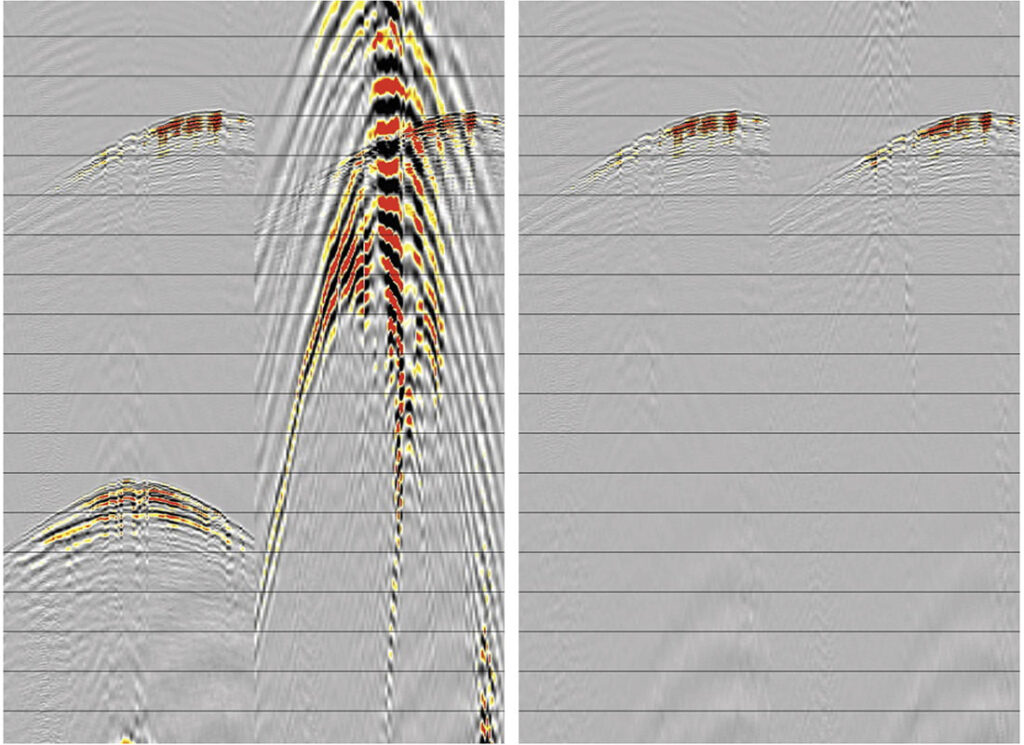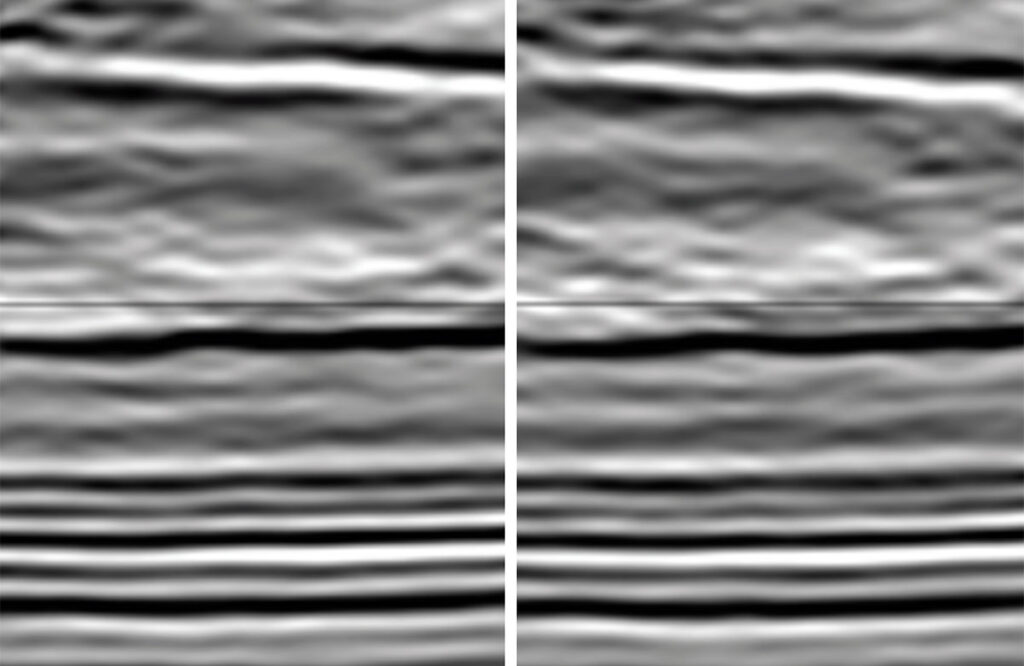By Andrea Crook, P.Geoph.
Summary
Simultaneous source acquisition has proven to be effective at increasing trace density without incurring significant increases in seismic acquisition cost. As a result, most simultaneous source datasets have significantly higher trace density than previous datasets requiring decimation of the simultaneous source dataset or interpolation of the regular dataset to effectively compare the results. In this case study, both a regular vibroseis dataset and a simultaneous source dataset were acquired with the same high-density geometry enabling a direct comparison.
Method
During the acquisition of the regular vibroseis program, a small simultaneous source dataset was also acquired. What is unique about this test is that both datasets were acquired with the same geometry and have high trace density with 18,000,000 tr/km2. As a result, a direct comparison can be made between the two datasets without needing to decimate or re-bin the data. This enables a comparison of different deblending methods (noise attenuation and inversion-based deblending, Figure 1) as well as an assessment of noise due to overlapping shots and the close proximity of vibroseis.

Results
In Figure 2, results from the conventional survey are compared with inversion-based deblending. Despite the added noise from acquiring the vibroseis sources simultaneously, the final stack is directly comparable to the conventional data. In addition, the simultaneous source dataset was acquired in half the time of the conventional dataset.

Conclusions
By acquiring the two datasets with the same high-density geometry, a direct comparison of regular vibroseis and simultaneous source acquisition can be made. Results indicate that the simultaneous source dataset is comparable to the regular vibroseis dataset.
Acknowledgements
The author would like to thank the companies that worked on these projects and anonymously provided data.
